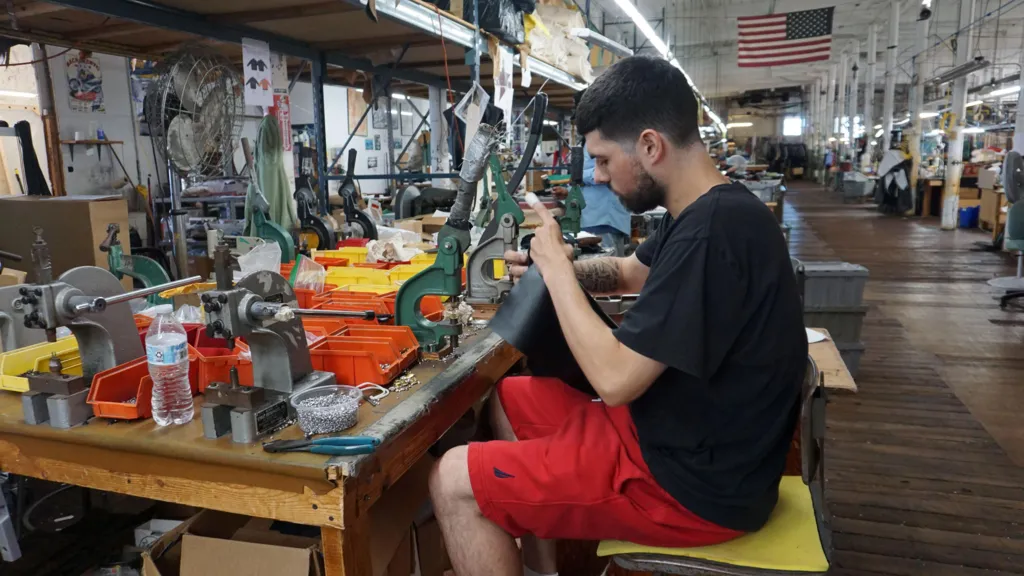US Factory Spending $100,000 More Each Month Under Tariffs

In Fall River, Massachusetts, a town with deep roots in American textile manufacturing, small and mid-sized factories are grappling with the reality of US President Donald Trump’s sweeping tariffs. For some, the policy is adding hundreds of thousands of dollars a month to costs, forcing difficult choices about investment, hiring, and long-term survival.
At Accurate Services, a once-thriving manufacturer now mostly operating as a warehouse and distribution firm, co-owners Frank and Sue Teixeira say they have turned down new sewing work despite increased inquiries from companies seeking US-based production. Hiring challenges and fears the demand won’t last kept them from expanding.
“Tariffs are a bad policy and eventually are going to come home to haunt us,” said Frank Teixeira, who joined the family business in the 1970s and oversaw its restructuring after most of its operations were shuttered in 1990.
Trump campaigned on tariffs as a way to revive US manufacturing and deliver cheaper goods. The message resonated in working-class communities like Fall River—where his 2016 win marked the first Republican presidential victory in roughly a century. But nearly nine months into his current term, the disconnect between political rhetoric and economic reality is becoming clear.
Experts had long warned that tariffs, essentially taxes on imports, would raise costs for US businesses reliant on global supply chains. That prediction is playing out: last month, a survey by the Dallas branch of the Federal Reserve found 71% of manufacturers reporting tariffs had already harmed their business.
One of the hardest-hit is Matouk, a family-run bedding and linen manufacturer also based in Fall River. Chief executive George Matouk said tariffs on imported fabric and down—sourced from countries like India, Portugal and Liechtenstein—are costing the company more than $100,000 (£74,000) each month.
The company employs 300 people, but Matouk says rising costs are forcing cutbacks on equipment purchases and marketing. Despite producing in the US, he expects no benefit from tariffs: “Because the materials are subject to tariffs just like everything else, the benefits are not there.”
The frustration runs deep. “We’ve done all the things we were supposed to do to invest in the industrial base of the United States… and now we’re being penalised,” he said, calling the situation “demoralising in a new way.”
Other manufacturers share the concerns but remain cautiously optimistic. Mike van der Sleesen, owner of Vanson Leathers, which makes premium motorcycle jackets, said tariffs had raised his costs by 15% this year. Still, he echoed Trump’s view that trade has been unfair, with foreign firms enjoying easier access to US markets.
Founded in 1974, Vanson once employed more than 160 people, but competition from China shrank its staff to about 50. For now, demand for its high-end jackets remains strong. “We haven’t heard overtime in the textile world for 20 years!” van der Sleesen said, while admitting the outlook remains highly uncertain.
Nationally, the picture is grim. Manufacturing payrolls have shrunk by 12,000 jobs last month alone, while surveys indicate the sector is in contraction. Studies of Trump’s earlier tariffs showed limited job gains in protected industries like steel were outweighed by losses at firms reliant on imported parts.
Yet on the streets of Fall River, many residents remain loyal to Trump’s promise of a manufacturing revival. Retired transit worker Tom Teixeira, 72, said he has voted for Trump three times and is still willing to give the policy time.
“I know how it was and it can improve, but it’s not going to improve overnight,” he said. “A year from now, if things aren’t cheaper, we’ll see.”
